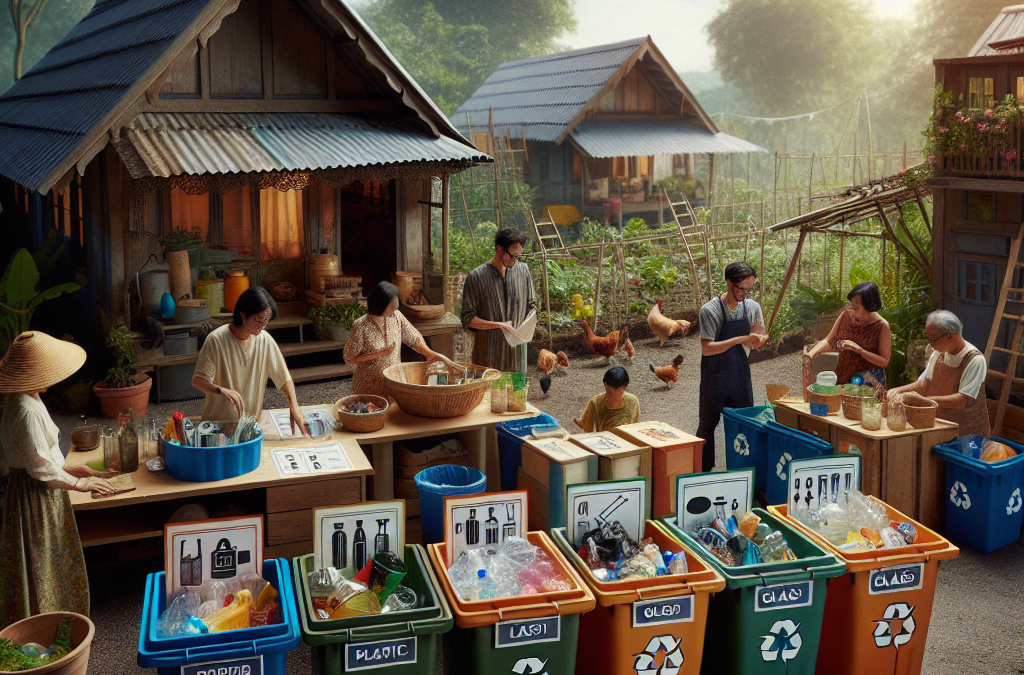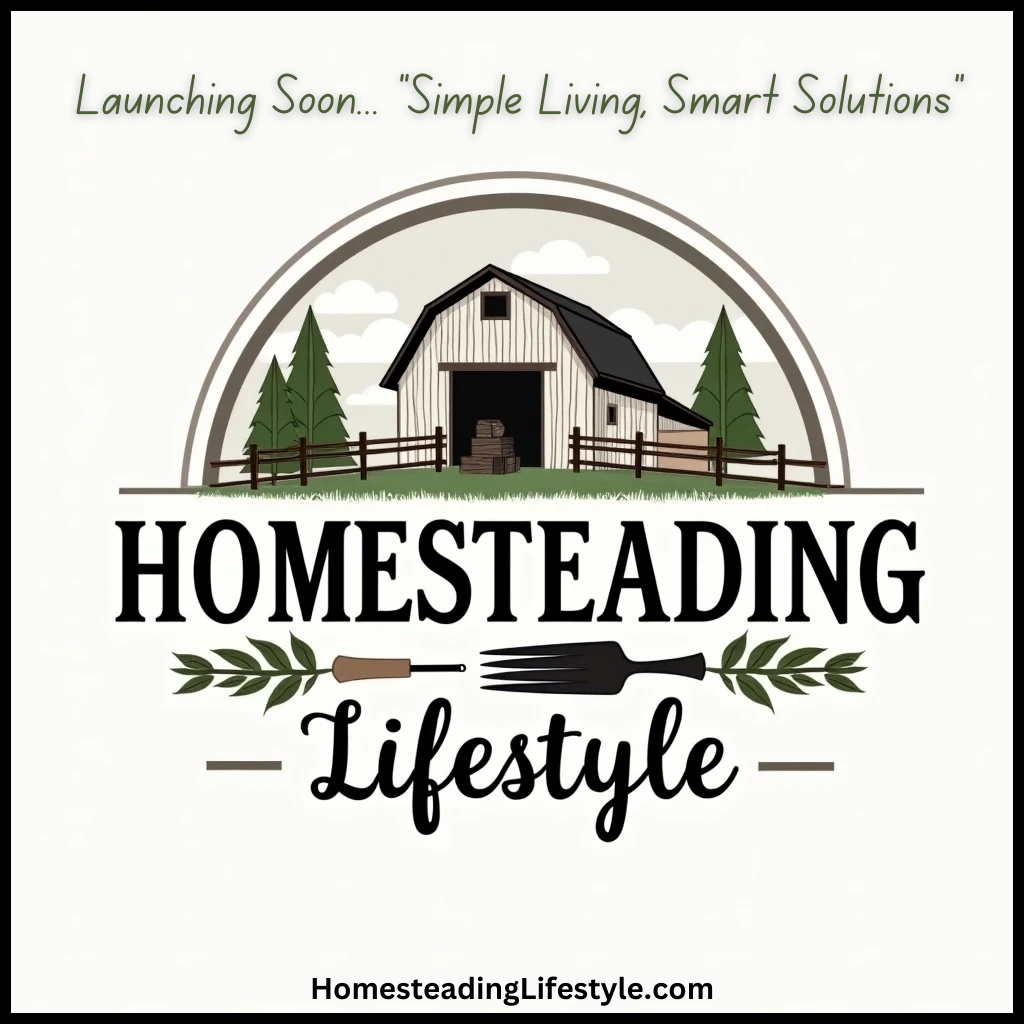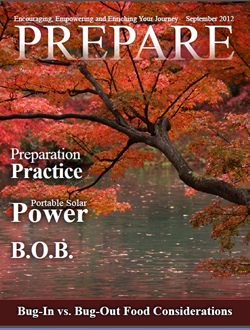1. Assess Your Recycling Needs
Understanding Waste Types
Before you dive headfirst into creating your recycling system, it’s super important to understand the kind of waste you produce on your homestead. I started by taking a good look at everything from kitchen scraps to yard waste and even those pesky plastic tags from the grocery store.
Waste falls into several categories—organic, recyclables, and general trash. By categorizing your waste, you’ll see just how much can actually be recycled or repurposed, which was an eye-opener for me! You’d be amazed at how much compost material comes from those vegetable peels and egg shells.
Once you know what you’re dealing with, it becomes easier to create designated areas for each type of waste. This organization will save you time and effort in the long run, trust me on that!
Setting Goals
After understanding the types of waste, I found it helpful to set some goals. Ask yourself what you want to achieve with your recycling system. Are you looking to reduce waste by a certain percentage? Or maybe you want to produce healthy compost for your garden? Whatever it is, having clear goals is essential.
For me, I wanted to focus on reducing plastic waste. I felt an emotional tug towards the environment, and I believe you might resonate with that too. By setting a specific goal, I was able to create actionable steps that kept me motivated.
Plus, tracking your progress makes it even more rewarding. Celebrating those small wins, like successfully reducing waste for a month, really fuels the fire to do even better!
Creating a Waste Inventory
Next up was conducting a waste inventory. I took a week to document everything I tossed out. It sounds a bit like a chore, but it really helps to see it all laid out. Grab a notebook and jot down your findings. You might be surprised by the patterns you see.
Once I had my inventory, I categorized it, which made it even clearer what I could change. For instance, I realized that a ton of food waste could be composted instead of just thrown away. It gave me actionable insights that helped design my recycling system from the ground up.
This inventory goes hand in hand with your goals and your understanding of waste. The more informed you are, the better choices you can make for your homestead’s recycling efforts.
2. Develop a Recycling System
Choosing Containers
Now that you know what you’re working with and have your goals set, it’s time to choose your containers. I found that having clearly labeled containers made it easier not just for me, but for the whole family!
I went with three different bins: one for compost, one for recyclables, and another for trash. The labels are crucial—there’s nothing more frustrating than fishing through a trash bin trying to find out what went in where.
To make it even better, I used different colors for the bins. This simple trick helps everyone remember which is which, making the recycling journey feel more like a team effort. It turned out to be a game-changer!
Establishing a Collection Routine
Once I had my containers set up, I quickly realized that having a collection routine in place is key. I didn’t want to end up with overflowing bins every week. So, I made it a point to get into a habit.
I found that emptying the compost every couple of days really helped with odors and also made it easier to turn into the garden. The recyclables I took out on the same day when I put the trash bins out. Keeping it consistent kept the system running smoothly.
Finding a rhythm that works with your lifestyle is essential. The easier it is to manage, the more likely you’ll stick with it.
Educating Others
Don’t forget to get others on board! If you live with family or friends, it’s super important to educate them about how your new system works. I set aside a family meeting where I explained the importance of recycling and how our system works.
We even made a fun little game out of it! Whoever recycled the most in a week got to choose our family movie night. This extra encouragement can really motivate everyone to participate.
Remember, knowledge is power. The more everyone understands about the positive impact we can make, the more likely they’ll want to join in. It’s all about building a community around your recycling efforts!
3. Implement Composting Practices
Choosing a Compost Bin
Composting is one of the most rewarding aspects of my recycling system! While there are tons of options like tumblers or DIY bins, I ended up going for a simple wooden bin I built myself. It felt good to get my hands dirty!
Having a dedicated compost bin was a great starting point. I made sure to put it in a convenient location so I wouldn’t have an excuse not to use it. Plus, being close to my garden means I can easily transfer the compost when it’s ready.
Weighty in benefits, composting gets rid of kitchen scraps while also boosting soil health. It’s a win-win, if you ask me. Plus, it’s impressive to see your waste transform into nutritious humus!
Maintaining Your Compost
Once you have your compost bin set up, maintaining it is critical. I learned early on that it’s about balancing greens (nitrogen-rich materials) and browns (carbon-rich materials). You want that perfect mix!
I regularly turn my compost to aerate it, which speeds up decomposition. It’s basically like giving it a little workout! Also, I keep an eye on moisture levels. Too dry or too wet could throw a wrench in the process.
After a while, I started to see results. Nothing is more satisfying than knowing you’re creating something valuable out of waste. You’ll learn a lot from your compost pile—it’s like your own living science experiment!
Using Compost in Your Garden
After months of waiting patiently for my compost to break down, seeing its transformation was surreal. I couldn’t wait to start using it in my garden! It felt like I was nurturing life from the waste we once discarded.
Mixing compost into my soil has improved both its texture and nutrient content. My plants are thriving, and it’s awesome to see an impact from my recycling efforts. The best part? I’ve cut down on store-bought fertilizers, too.
Sharing compost with friends has also become a tradition! I love spreading the seeds of sustainability while also enriching their gardens! It’s just one more way to keep this recycling journey alive.
4. Reuse and Upcycle Materials
Finding New Uses for Old Items
Before tossing something out, I’ve trained myself to ask, “Can this be repurposed?” From glass jars becoming storage containers to old jeans turned into plant pots, creativity knows no bounds!
My favorite project was turning wooden pallets into a garden bench. It became a fun afternoon project, and the end result was not just practical but a talking point for friends visiting my homestead.
The act of reusing items is like giving them a second life. It’s fulfilling and makes my homestead a bit more unique. Plus, it’s saving me money, which is always a bonus!
Organizing a Swap Event
Holding a swap event in my community became a fantastic way to connect with neighbors while promoting recycling. Everyone brings items they no longer need and trades them with one another. It’s a win-win!
It’s fun to see how people get creative with what they consider “trash.” From books to clothes, items get new homes, reducing waste while fostering community spirit.
By organizing an event, you also take the opportunity to educate folks on the importance of reusing materials. It’s great to spark those conversations and inspire others to think about waste more thoughtfully!
Incorporating Crafts into Recycling
If you’re crafty, let that part of you shine! I love finding DIY projects that integrate recycled materials. Whether it’s making ornaments from paper or decorations from plastic bottles, the possibilities are endless.
Crafting with recycled materials not only gives a joint purpose to seemingly useless items but also makes for great family activities. I remember creating a bird feeder with my kids using a milk jug and some twine. Not only did we help the environment, but we also created wonderful memories together!
Plus, sharing those crafted goodies also spreads the message of sustainability. You’d be amazed at the conversations it sparks. Who knew a soda can could turn into art?
5. Stay Informed and Evolve Your Practices
Keeping Up with Recycling Trends
Just like anything else, recycling practices can evolve. I’ve made it a habit to stay updated with new trends by subscribing to homesteading and sustainability blogs. It helps keep my recycling efforts fresh!
By learning about innovations, I’ve discovered new ways to recycle that I’d never thought of before, like eco-bricks or zero-waste practices. The more I know, the more I can do to improve my homestead recycling system.
Investing time into learning ensures that my practices stay relevant and impactful. And it’s kind of fun to experiment with these new ideas!
Encouraging Feedback from your Community
Don’t hesitate to chat with others engaged in similar practices! Reconnecting with the local community and friends has helped me refine my methods. Having conversations about what works—and what doesn’t—can lead to better solutions.
It’s fascinating to hear about others’ successes and challenges. I often learn a new tool or technique simply by sharing experiences! Staying open to feedback can significantly enhance your recycling system.
Remember, it’s a journey. Allowing yourself to adapt as you learn is what truly helps your homestead thrive.
Reviewing Your Goals Regularly
As I’ve grown deeper into my homesteading journey, I’ve found it crucial to review my initial goals. Getting into the habit of scheduling reviews—maybe quarterly—helps me check in on my progress.
It’s all too easy to fall into a routine and miss areas where improvements can be made. I often find new targets to aim for, whether it’s increasing compost production or expanding my upcycling projects.
Each time I reassess, it feels like hitting a refresh button. Plus, it motivates me to share my progress with my community—encouragement from others can do wonders for your practices!
FAQs about Homestead Recycling Systems
- What should be included in a homestead recycling system?
Include composting, specific recycling containers for different materials, reusing items, and staying updated on best practices. - How can I persuade my family to help with recycling?
Educate them about the environment, involve them in activities, and make it fun with little rewards or challenges. - What are the best materials to compost?
Kitchen scraps like vegetable peels, eggshells, and yard waste like leaves and grass clippings are all great for composting. - How can I find new uses for items before throwing them away?
Challenge yourself to think creatively, or involve your community by sharing ideas during a local swap event. - Why is it important to stay informed about recycling practices?
The more you learn, the better choices you can make. New techniques can enhance your recycling and composting efforts!





